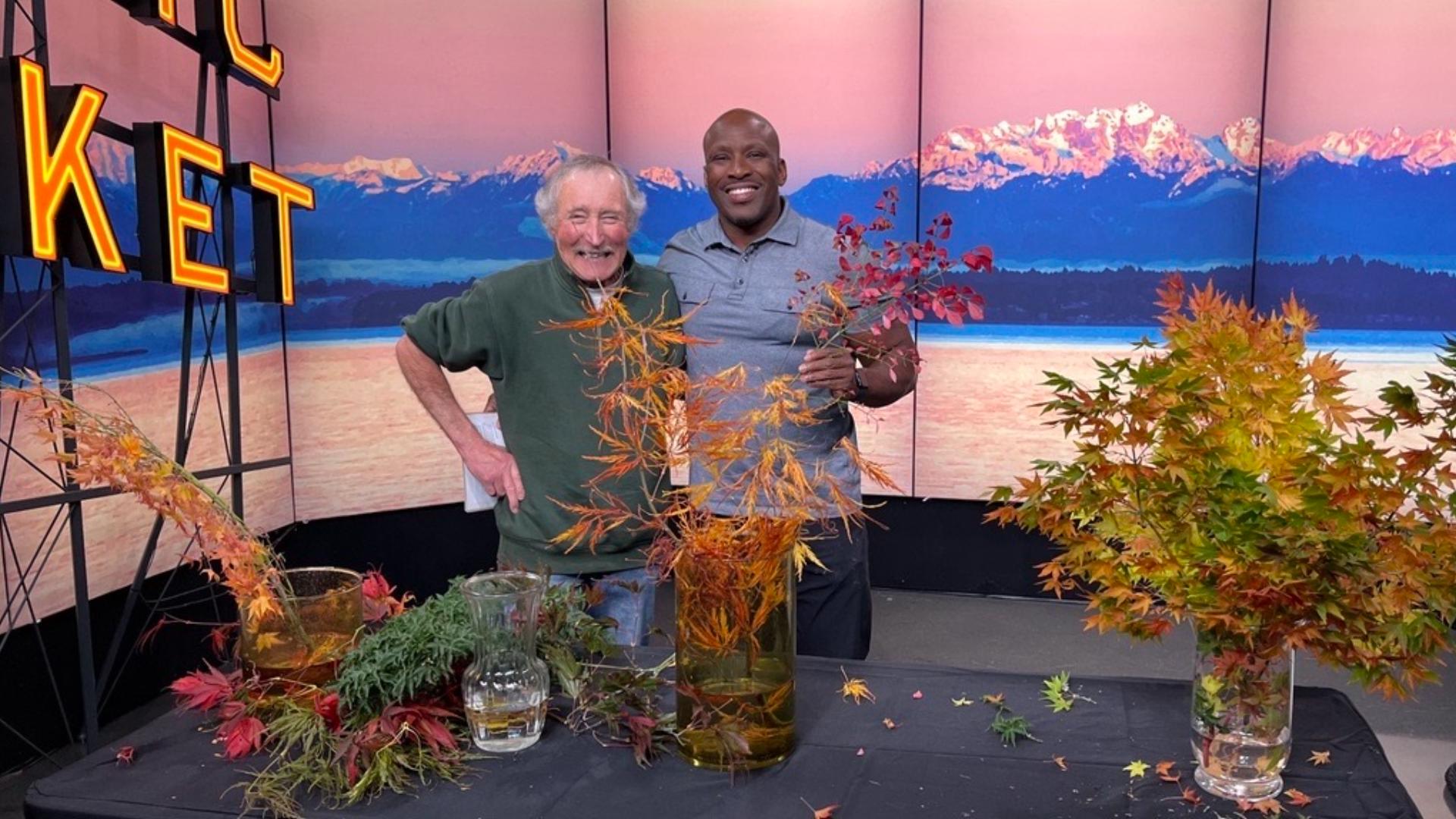SEATTLE — Garden Wisdom from Ciscoe Morris:
Choosing a tree or shrub for fall color
Having grown up in Wisconsin I know the value of fall color. The deciduous forests were ablaze with color in Autumn. You might be surprised, however, when I say that I find the fall color displays in the Pacific Northwest every bit as spectacular as they were in Wisconsin. That's because it's not just a blur of color here. With all the evergreen plants, every tree and shrub that puts on a colorful display, glows like a jewel against the green background.
Why is it that sometimes trees and shrubs that are supposed to color up beautifully end up duds? There's nothing as disappointing as when a tree you plant for a fall display, ends up a total dud. That's what happened to my wife Mary. She put in a beautiful new landscape in the garden we see out our bedroom window. The centerpiece was a weeping Japanese maple called 'Spring Delight'. It should have been called 'Fall Dud.' The tag said that it would burst into spectacular red and orange in fall. Yet in the past 2 years since she planted it, in autumn the leaves turn an ugly brown and then fall off. She bought it in spring and had no way to know. I had a similar experience at Seattle U. when I was the Director for Grounds care there. In the spring I planted two vine maples famous for turning fabulous fall color in front of the Fine Arts Building. Exposure to sun and soil conditions were identical. Yet one of the maples colored up so beautifully you had to wear sunglasses to look at it. The other was the dud of history. Just like Mary's Japanese maple, the leaves turned an ugly brown before falling off the tree.
There are several reasons why a tree or shrub that is normally famous for fall displays ends up a dud.. The truth of the matter is that some trees and shrubs what's got it, and some what's ain't. Some trees and shrubs just will never color up no matter what you do. The good news is that there is an easy way to make sure the tree or shrub you buy will color up every year. Buy the plant you're getting for fall color in fall when it is in full color at the nursery. In my long gardening career, I've found that if a tree or shrub puts on a beautiful display in its nursery pot, it's got the gift and will do the same thing every year in the fall for as long as it lives if it's planted in the conditions it needs. Furthermore, fall is the best time to plant a tree or shrub. Mama nature will water it for you, and planted in fall, trees and shrubs grow deep root systems during winter, that will get them off to a good start in spring making them much better able to handle summer drought conditions. Even better, nurseries don't want to carry too many trees and shrubs through the winter, so they often put them on sale in fall.
There is one other thing to keep in mind when choosing a tree or shrub for fall color. Make sure you follow the directions on the tag regarding what kind of growing conditions it needs. If you put a plant that needs sun in shade it probably won't color up as well as it would have in sunshine. On the other hand, planting a shade loving tree or shrub in sun may cause the leaves to burn and turn brown rather than color up as they normally would. In fact, if you have a plant that used to color up but doesn't anymore, it could be that over time the surrounding trees in your garden have grown big and are shading it.
That can cause the tree or shrub to stop changing color in fall. It the plant isn't too big, eat lots of brussels sprouts for energy, and after the leaves fall off and the tree or shrub goes dormant, transplant it to a better location. I can almost guarantee it will begin coloring up again.
Segment Producer Suzie Wiley. Watch New Day Northwest at 11 a.m. weekdays on KING 5 and streaming live on KING5.com. Contact New Day.

